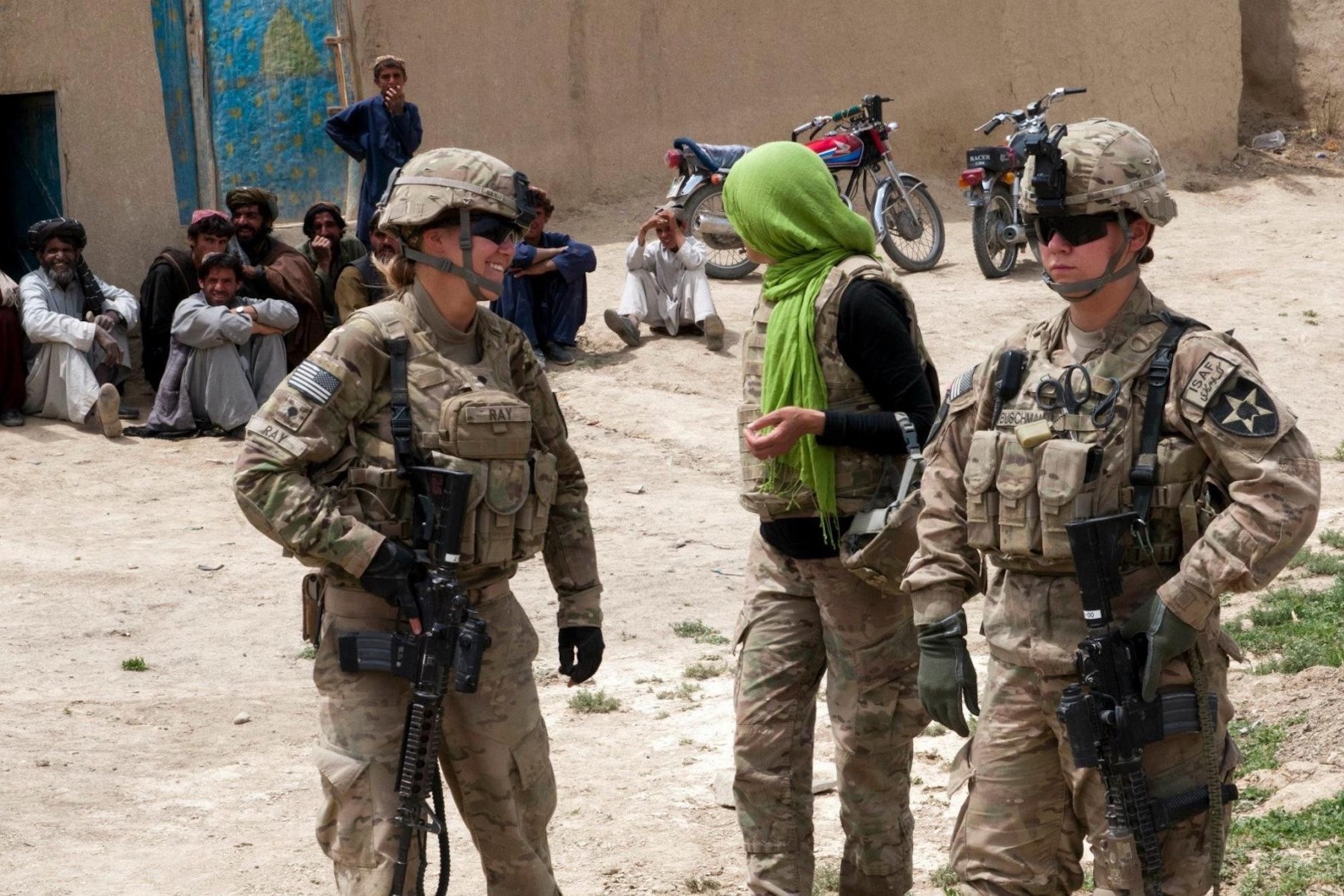
As the United States and its allies continue their withdrawal from Afghanistan, the U.S. military is drawing up plans to evacuate thousands of Afghan interpreters and others who worked with American troops and are in danger of reprisal from the Taliban.
Chairman of the Joint Chiefs Gen. Mark Milley told reporters Wednesday that the military is considering several options for how to help Afghans whose lives, and the lives of their families, might be in danger after the withdrawal is complete. He said the State Department is taking the lead, and the military will support it.
“There are plans being developed very, very rapidly here, for not just the interpreters but a lot of other people that have worked with the United States,” Milley said on the flight back from the U.S. Air Force Academy‘s graduation ceremony in Colorado Springs, Colorado, according to Defense One. “So there’s a prioritization of categories of these folks.”
Read Next: After Senate Snafu, Christine Wormuth Confirmed as the First Woman to Lead the Army
Milley said the Special Immigrant Visa program will be part of the government’s effort to safeguard the Afghans, but it is not the only option. The SIV program is highly troubled and understaffed, and its byzantine process often leaves Afghans waiting years to be approved to move to the United States.
The clock is ticking for tens of thousands of interpreters and other Afghan partners and their families. The United States and coalition allies have until Sept. 11 to pull the few thousand remaining troops and contractors from Afghanistan, though the withdrawal process is likely to be finished earlier this summer.
Advocates for Afghan partners are increasingly sounding the alarm that a bloodbath will occur if the United States does not act quickly to assist those it promised to help.
“The whole point of all this is trying to prevent a genocide from occurring,” Matt Zeller, co-founder of the group No One Left Behind, a nonprofit group that assists Afghans with the SIV program, said Wednesday in an interview with Military.com. “This is a ‘never again’ moment that is eminently preventable. It only gets harder if we do nothing. But we can get it done if we [do] something now.”
Zeller, a captain in the Army Reserve, said he owes his life to an Afghan interpreter.
“I’m only alive talking to you today because my interpreter from the war shot and killed two people who were about to kill me in a battle,” he said. “And he’d be the first person to tell you that if he believed that Americans weren’t honorable people who keep their word, he wouldn’t have partnered with us.
“What if that becomes the prevailing narrative going forward?” he continued. “What if the prevailing narrative is, ‘American partnership is a death sentence for you and your families?’ Does anyone sign up to work with us in future conflicts? I don’t think so.”
An April study from Brown University, outlining problems with the SIV program, said there are about 18,800 Afghan applicants stuck in a backlog. Many of them have spouses, children or other immediate family members who are also in danger, Zeller said. That means tens of thousands of Afghans could require rapid evacuation.
Advocates such as Zeller support a plan to fly Afghans who have worked with the United States, and their families, to Guam, a U.S. territory where an Air Force base is located. This would allow the Afghans to stay in safety while the bureaucratic process plays out.
Defense One reported that Milley would not say whether using Guam as a way station is one of the options being considered.
“I’m not going to say the specifics of what’s on the table or off the table,” he said, according to Defense One. “Here’s what I would tell you though: We have a moral commitment to those who helped us.”
Milley’s comments represent the strongest indication that the military is making contingency plans to ensure the safety of Afghan allies. Pentagon Press Secretary John Kirby also hinted that something was in the works on Wednesday, though he said the military hasn’t been given any orders yet to fly Afghans to Guam or take other actions.
“This is a planning organization, and we want to be ready for all manner of contingencies,” Kirby said at a press briefing. “But there’s been no tasking to do anything of that sort or to provide any transportation at this time.”
The logistics of such an evacuation would be vast. Even if the military decides to fly Afghan allies and their family members to Guam in large aircraft such as C-17 Globemasters, it could require hundreds of flights.
Zeller said the U.S. must act immediately or face a moral catastrophe.
“We just don’t have time,” he said. “It’s either put them on planes, get them to Guam, and then process their visas in safety, or stand back and watch the Taliban murder these people. There are no other options.”
If the U.S. doesn’t honor its commitments to those who helped it, Zeller said, the results will be very public — and nobody will stick their necks out for the United States again.
“And this time, unlike Vietnam, [the world will] watch [reprisal killings] happen on TV,” he added. “There is going to be a visual narrative that we’ll be haunted [by] for the rest of our lives if we don’t do this now.”
— Stephen Losey can be reached at [email protected]. Follow him on Twitter @StephenLosey.
Related: Troubled Visa Program for Afghan Interpreters May Do ‘More Harm Than Good,’ Study Finds
© Copyright 2021 Military.com. All rights reserved. This material may not be published, broadcast, rewritten or redistributed.
